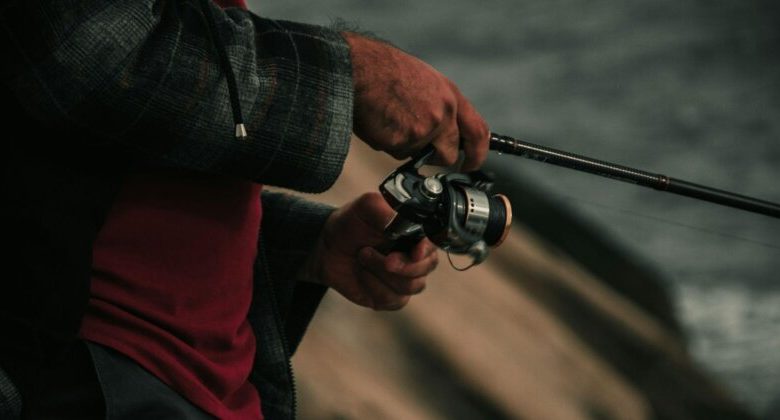Essential Fishing Gear You Shouldn’t Forget

Every time I pack for a fishing trip, I convince myself that this will be the time I don’t forget something important. Spoiler alert: I’m usually wrong. Whether it’s the trusty pliers that slip my mind or the all-important sunscreen, I’ve left enough gear behind to stock an entire “lost and found” bin.
If you’re anything like me, then you know the pain of realizing you forgot your lucky lure just as the fish start biting. So, to save both of us from future frustration, here’s a list of essential fishing gear you shouldn’t forget when packing for your next adventure. Trust me, it’s a game-changer.
Fishing Rod and Reel
No fishing trip is complete without the right rod and reel combo. Regardless of whether you’re heading to freshwater lakes, battling saltwater waves, or testing your skills with fly fishing, your gear needs to match the job. A well-chosen setup will make your casts more precise, help you reel in with ease, and give you the strength to handle whatever you catch.
- Fishing Rod: Your rod should be chosen based on the fish you’re after and the environment you’re fishing in. Going after big, strong fish? Opt for a rod with a higher weight rating. For versatility, a medium to heavy action rod is a reliable option that can handle a wide variety of species.
- Fishing Reel: If you’re after something that’s tough, dependable, and smooth, the Shimano Nasci is a great pick. Known for its top-notch drag system and adaptability in different fishing scenarios, it’s a favorite among anglers for many good reasons.
Make sure that your rod and reel are up to the challenge and are designed for both your target species and the water you’ll be casting into.
Fishing Line
Your fishing line is what connects you to the fish, so choosing the right line is crucial. Lines come in different types, each designed for specific situations and fish species. Common types include monofilament, fluorocarbon, and braided lines.
- Monofilament: This is a good all-around line for beginners. It’s easy to use, stretchable, and works well in various situations.
- Fluorocarbon: Known for being nearly invisible underwater, fluorocarbon is great for targeting fish that are easily spooked. It’s abrasion-resistant and performs well in clear water.
- Braided Line: Braided lines are extremely strong and sensitive, allowing you to feel even the slightest bite. They’re ideal for fishing in areas with heavy vegetation or where you need to pull fish out of tough spots.
Remember to match your fishing line to the rod, reel, and species of fish you’re targeting. Always bring extra line in case of tangles or breaks during your trip.
Lures, Baits, and Hooks
Having the right lures, baits, and hooks in your tackle box is essential for attracting and catching fish. The type of fish you’re targeting will dictate the specific gear you need.
- Lures: Fishing lures come in a wide variety of shapes, sizes, and colors, each designed to mimic the movement of different types of prey. Crankbaits, spinnerbaits, jigs, and soft plastics are popular choices. Be sure to pack a selection of lures to cover different water conditions and species.
- Live Bait: Some anglers prefer live bait such as worms, minnows, or shrimp. Live bait can be especially effective when targeting species like bass, catfish, and trout.
- Hooks: Hooks come in various sizes and styles, including single hooks, treble hooks, and circle hooks. The size of the hook should match the size of the fish you’re targeting. For example, smaller hooks are ideal for catching trout, while larger hooks work better for bigger fish like pike or bass.
Fishing Pliers and Tools
Fishing trips often require a variety of tools, from cutting fishing line to removing hooks from a fish’s mouth. A good pair of fishing pliers is indispensable. They help with:
- Removing hooks from fish
- Cutting fishing line
- Crimping split shot weights
Choose pliers made from corrosion-resistant materials, especially if you’re fishing in saltwater environments. Additionally, pack other useful tools like a multi-tool, a fish scaler, and a hook sharpener to keep your gear in top condition during your trip.
Tackle Box and Storage Solutions
A well-organized tackle box can make your fishing trip much more efficient. Invest in a durable, multi-compartment tackle box that allows you to store and organize your lures, hooks, sinkers, and other small items.
If you’re planning a longer trip or need to carry a larger amount of gear, consider a tackle backpack or tackle bag. These offer ample storage space, easy portability, and compartments to keep everything in place. Don’t forget to pack a few plastic resealable bags to store used or wet gear separately.
Fishing Net
A fishing net can be a lifesaver when you’re reeling in a catch, especially if you’re targeting larger fish. A landing net helps you scoop the fish out of the water safely without putting too much strain on your fishing line. Look for a net with a rubberized coating to avoid harming the fish, especially if you plan to practice catch and release.
For larger fish species like salmon, bass, or pike, a longer-handled net will provide better control and ease during landing.
Fishing License and Regulations
Before heading out on your fishing trip, make sure you have the proper fishing license for the location you’ll be fishing in. Different states and countries have specific regulations regarding fishing licenses, seasonal restrictions, and catch limits.
It’s essential to familiarize yourself with local fishing laws to avoid fines or penalties. Some areas may have restrictions on certain fish species, fishing methods, or specific locations. In addition to having a valid fishing license, always carry a copy of local fishing regulations with you.
Appropriate Clothing and Footwear
Comfortable clothing and footwear are often overlooked but play a huge role in how enjoyable your fishing trip will be. Here are some must-pack items:
- Weather-Appropriate Clothing: Dress in layers to prepare for changing weather conditions. Waterproof jackets, hats, and sunglasses are essential for protecting yourself from the elements.
- Footwear: Sturdy, waterproof boots or wading shoes are crucial for fishing in streams, rivers, or from the shoreline. Non-slip soles will help you maintain traction on wet or slippery surfaces.
- Sun Protection: Pack sunscreen, polarized sunglasses, and a wide-brimmed hat to protect yourself from the sun’s rays, especially during long hours spent on the water.
Cooler or Livewell
If you plan to keep the fish you catch, you’ll need a reliable way to store them until you return. A cooler with ice is essential for keeping your catch fresh, especially if you’re fishing in hot weather.
For boats equipped with a livewell, make sure it’s working properly before your trip so you can keep fish alive and fresh until you’re ready to head home.
First Aid Kit
Accidents can happen, especially when dealing with hooks, sharp tools, and outdoor conditions. A basic first aid kit should always be part of your gear. Pack essentials like adhesive bandages, antiseptic wipes, tweezers, and pain relievers. Having a well-stocked first aid kit can prevent minor injuries from ruining your trip.
Camera or Smartphone for Photos
Catching a trophy fish is an exciting moment, and you’ll want to capture the memory. Whether it’s a dedicated camera or your smartphone, make sure you have something to take pictures with. Waterproof phone cases or dry bags can protect your electronics from water damage.
Many anglers enjoy documenting their catches and sharing them on social media or with friends and family. Be sure to take a few shots of your fishing success!
Final Thoughts
Packing for a fishing trip requires more than just grabbing a rod and heading out the door. Having the right gear will help you to handle any situation that arises on the water.
Don’t forget to prioritize quality when selecting your pieces. For example, investing in a reliable reel like the Shimano Nasci can improve your fishing experience as it will provide smoother casts and better performance under a variety of conditions. When you’re well-prepared, you’ll have a great time and more chances of landing that perfect catch.




